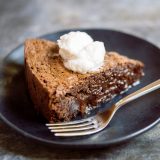A native Californian, Ptak is a rising star on the English culinary scene—hailed by Jamie Oliver as “one of my all-time favorite cake-makers.” But Violet and Ptak are about more than being an of-the-moment patisserie. It is here that she carries out a fairly revolutionary approach to baking—Soft-whipped egg whites! Flour licking!—that sets her apart from the cookie-cutter mold.
Decorated in a rustic, inviting style, the bakery turns out savory bites along with all the cakes and buns of tea-time dreams, including limited-edition buttercream frostings that change with the seasons and buckwheat cakes topped with raspberries and white currants. But Violet is no sugar rush. Ptak looks for balance—a dash of salt, not a spoonful of sugar, smooths out the bitterness of intensely dark chocolate.
And her recipes burst with vibrant and unexpected flavors. Prunes get a bath in Earl Grey tea, a trick she picked up at English chef Fergus Henderson’s St. John restaurant; raspberry crumble muffins are tweaked with star anise, a spice usually more at home in savory dishes.
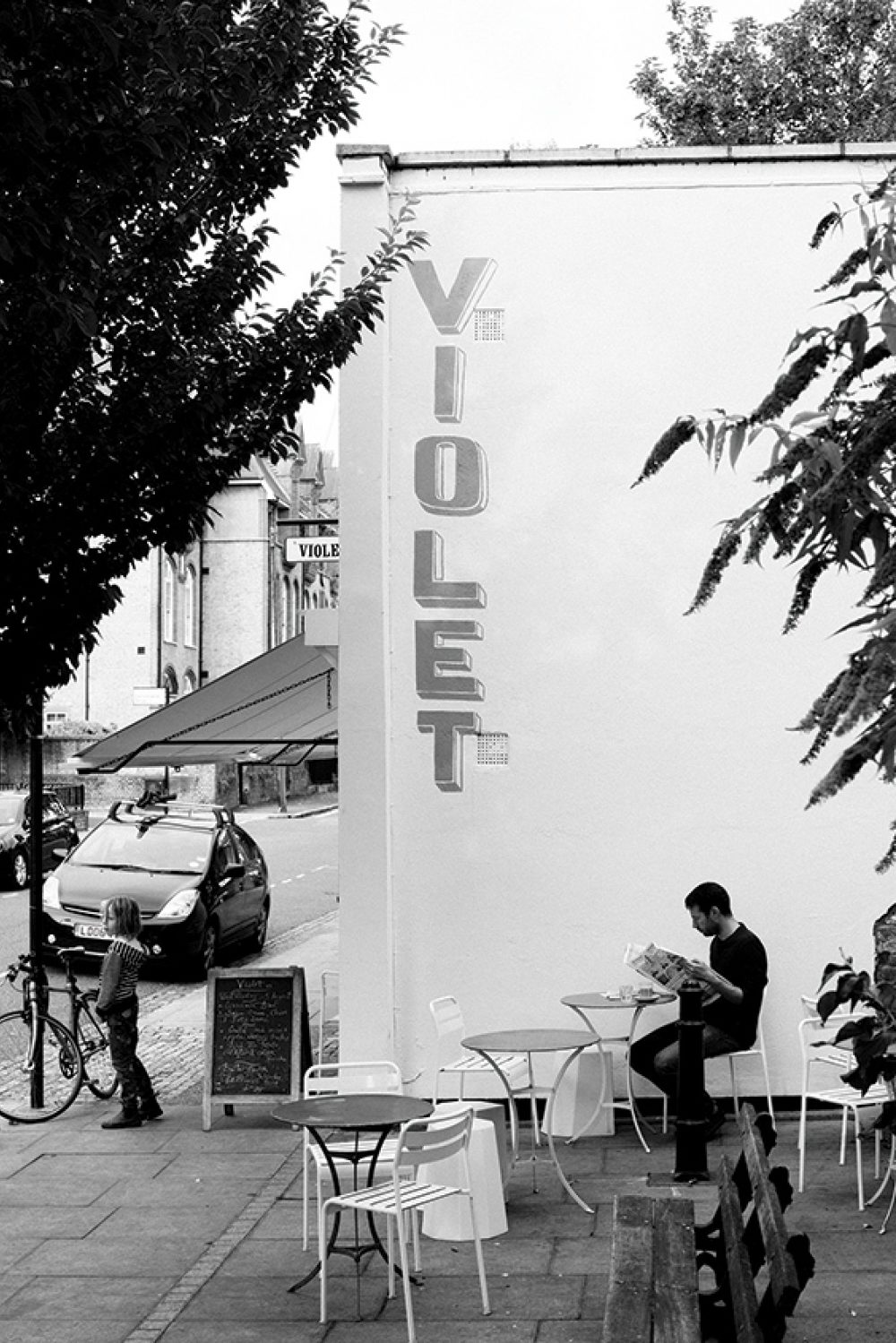
Ptak (pronounced like attack with a p, and yes, kids at school used to call her the Ptak Attack) started baking as a child, when she would whip up odd concoctions (2 cups milk, 1 cup blackberry juice, 1 cup butter, sprinkles) that her patient and encouraging mother would dutifully bake. The results were … “disgusting,” she admits with a laugh. “But I think it helped me to be experimental.”
In a precocious moment of foreshadowing, she and a friend made up a game called “Chez Panisse”—most likely they’d heard of the groundbreaking eatery from their parents—using leaves and flowers, etc., to represent the organic, seasonal cuisine served at Alice Waters’ famous Berkeley, California, restaurant, just across the San Francisco Bay from Ptak’s home in Marin County.
As a teenager she baked at small cafés and even worked the summer kitchen at a Wyoming dude ranch. But when she got to college, she chose a different field, unsure about cooking as a career. She focused on Latin American studies and film/video, graduating with a degree in communications, then working for a year as a film director’s assistant.
More jobs followed, but when a friend suggested she truly ought to be working at Chez Panisse, Ptak listened, auditioning for Waters with huckleberry tartlets—using berries she and her father foraged—and rose geranium cream. The dish wowed, but jobs at Chez Panisse were scarce and it was a year before a position opened up in 2002.
Ptak eventually rose to the job of pastry chef at Chez Panisse. But in 2005, she switched directions again, moving to London to be with her British boyfriend, now husband, Damian Thomas.
England, the land of afternoon cakes and tea, turned out to be a good fit for Ptak, who worked a variety of jobs, including baking and food styling, before opening a stall at the newly revived Broadway Market, where she sold baked goods, mostly cupcakes to start. In 2010, she found a permanent location and opened Violet, named after her favorite color and flower.
Cooking for the Brits meant making a few adjustments. The fresh fruit tarts and other minimalist desserts that were popular at Chez Panisse weren’t so popular as traditional tea-time treats, such as Eccles cake and treacle tarts. She had to wrap her brain around the concept of baking with dried fruit and learn to appreciate the deep, spicy flavors.
But though she’s happy to take on the classics, hers is no white-bread world.
Alternative flours such as spelt, buckwheat and rye show up in traditional desserts, such as brownies. And when those flours and other dry ingredients go into a bowl, she recommends a brisk whisk over the traditional, and more laborious, sifting (unless your ingredients are noticeably lumpy, in which case sift away). And bakers should taste, taste, taste, right down to a quick lick of flour to get a sense of the flavor it’s bringing to the mix. Is it salty? Bitter? Sweet?
“You need to start tasting before you get to the point of it coming out of the oven,” she says.
Married to the notion that whipped egg whites should resemble the stiff-peaked Himalayas? Get over it. Ptak advises keeping mixes consistent. So if you’ve got a soft batter, the whipped egg whites should be whipped to a similar consistency. That way, when you fold the egg whites into the batter, they’ll actually fold, not splinter or crumble.
And don’t feel you have to beat batters mercilessly, Ptak says. While she does advise scraping the bottom of the bowl to get all the ingredients, she advises against dividing and conquering every last streak of flour.
Another Ptak tenet: Don’t over-bake. A good rule of thumb—or fingertip, to be precise—is to press lightly on the cake surface and see if the indentation pops back up. Or you can use the common toothpick test. But don’t insist on a completely clean pick, and wiggle it around a little so you get a sense of whether the crumbs look dense or delicate.
Ptak’s pastry philosophy is beautifully represented in her chocolate, prune and whiskey cake, one of the recipes in her most recent book, “The Violet Bakery Cookbook.” The recipe showcases a relatively unsung baking ingredient—prunes—and demonstrates her willingness to experiment. This used to be her chocolate, prune and Armagnac cake until she found herself in County Cork with nothing but Irish whiskey on hand to soak the prunes.
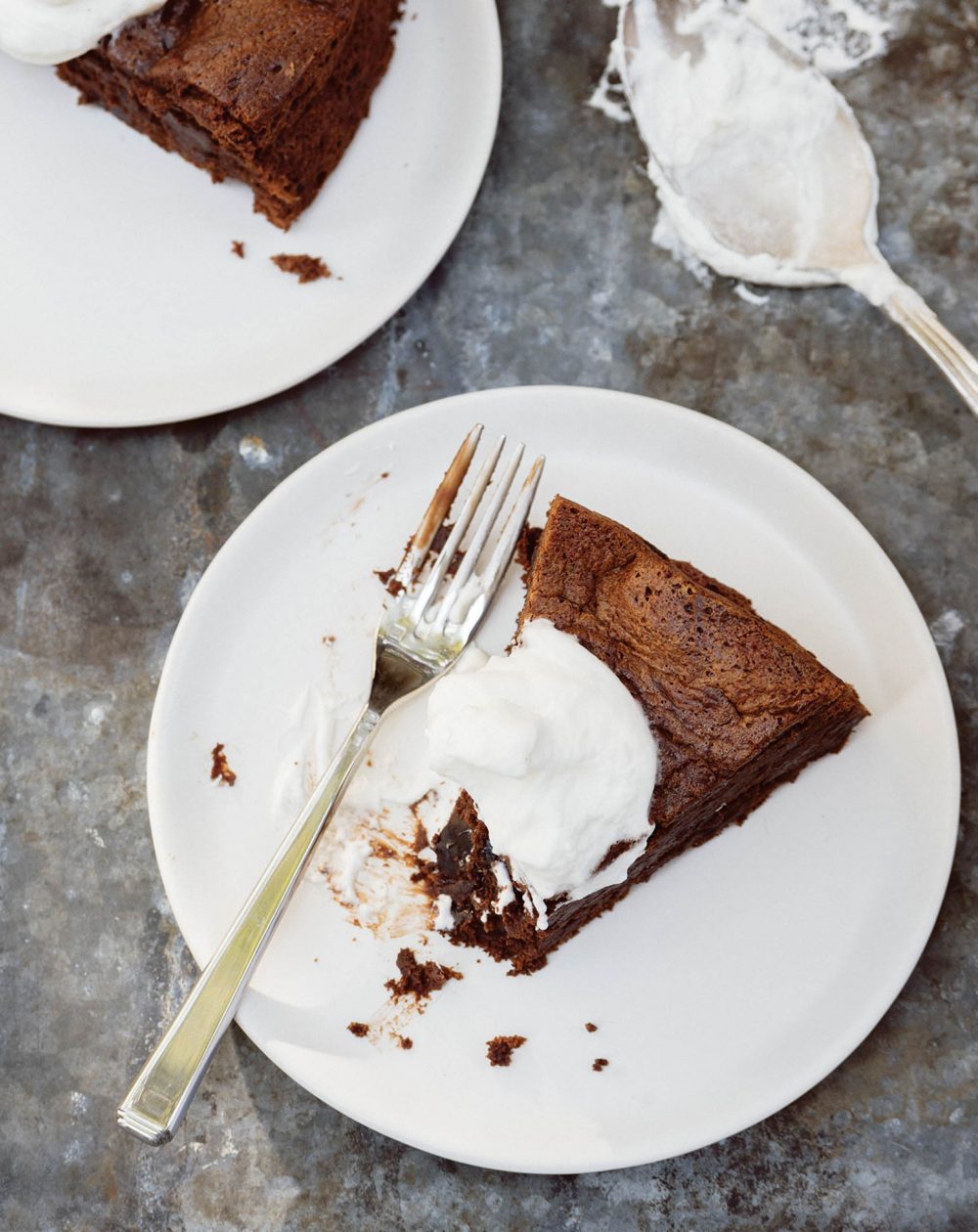
Chocolate, Prune and Rum Cake
Always whip egg whites to 2-inch peaks … And other bad advice
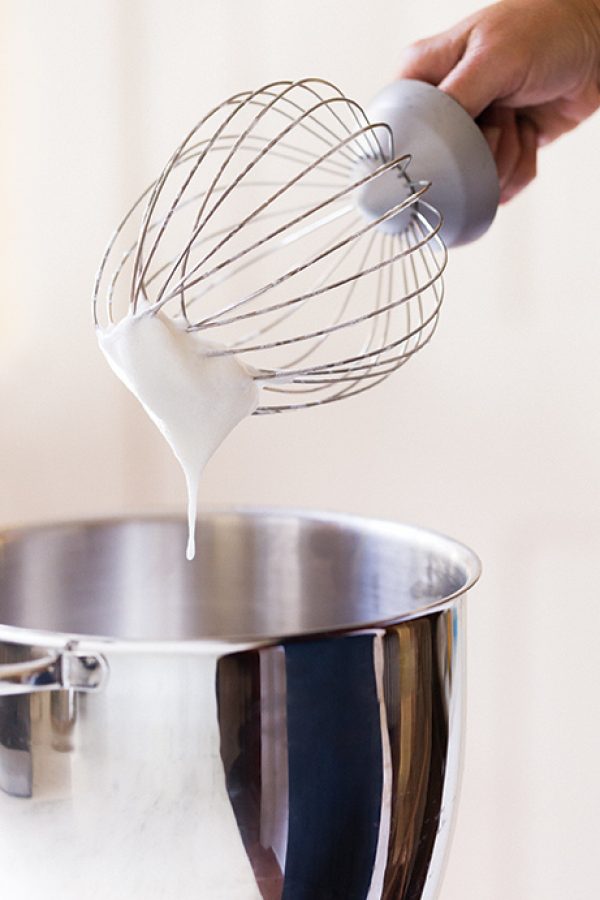
Insufficiently whipped egg whites are loose and drippy
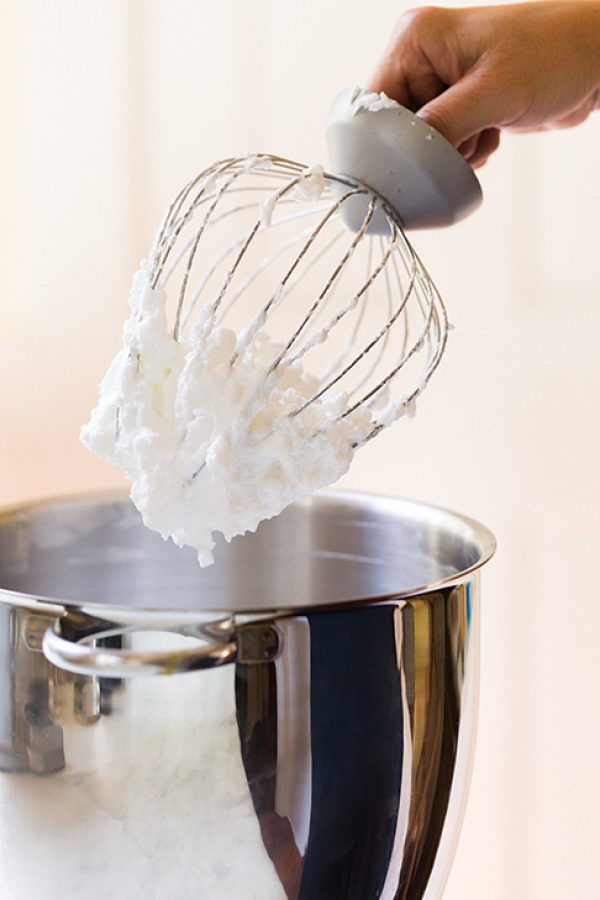
Over-whipped whites look dry and are too firm to work with.
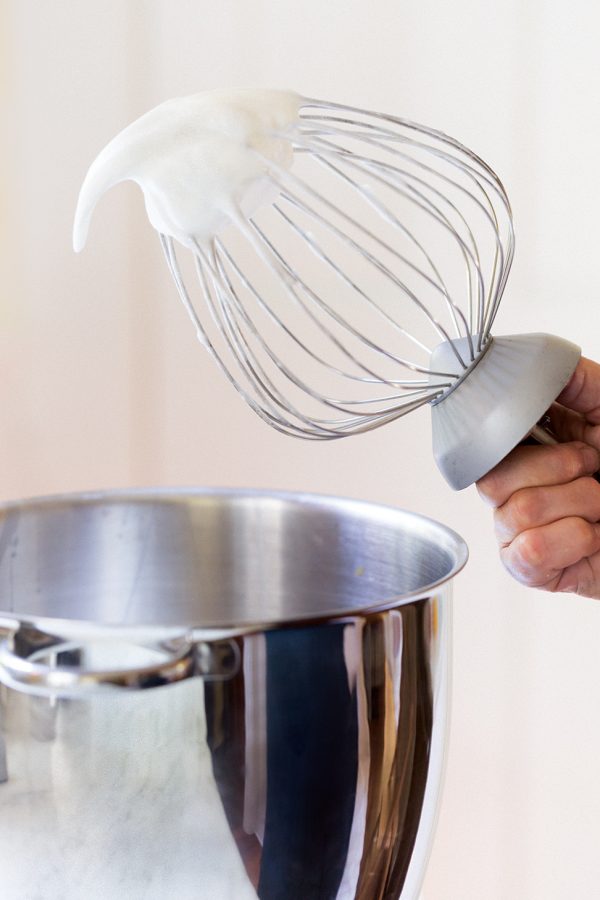
Properly whipped whites form gentle peaks with curved tips
There’s a handful of recipe directives that are both obtuse and endlessly repeated. “Until a toothpick comes out clean.” “Process until the butter is cut into pea-sized pieces.” And of course, “Beat until the egg whites hold 2-inch peaks.” A recent cooking lesson with Claire Ptak freshly called into question that last point. Her No. 1 rule for baking is to slightly under-whip egg whites, and her baked goods back it up. When we returned to Milk Street, we dove into the science behind the tip. Egg whites are a solution of proteins dissolved in water. When whipped, air bubbles are incorporated into the solution, and the bubbles become surrounded by a film of water and protein. This film expands with additional whipping but is limited by the amount of water—not the protein—in the solution. If the film of water is stretched too thin, the bubbles become fragile and burst. When slightly under-whipped, the bubbles in the beaten whites are surrounded by a thicker layer of water, making them more elastic and allowing them to expand in the heat of the oven. Stiffer whites are more rigid and expand less. Stiff whites also resist blending into batters; softer whites mix easily. But there’s more to it than just moisture. Left on their own, even under-whipped egg whites are fragile (gravity breaks the bond between the protein and the water). Enter stabilizers, which strengthen that bond. Sugar, for example, strengthens the bond by increasing the solution’s viscosity. Just take care to add it slowly so it dissolves into the foam; undissolved sugar weakens the structure. —Matthew Card
Her three don’ts come into play here: Don’t over-whip the whites, don’t over-mix the batter and don’t over-bake the cake. But do take your time melting the chocolate and butter, something best done over barely simmering water for the required velvety results.
It wasn’t so very long ago that chefs jealously guarded their special techniques. Ptak thinks that’s “the silliest thing.” She’s no eclair evangelist. If you don’t want to bake, that’s fine with her. But if you do, she’s there to help.
“Recipes should work well,” she says. “To share them is generous and nice and quite lovely. I love to share recipes and techniques, and in that sense, yes, I’d love for everyone to bake and go for it.”
